Parts
Types Of Mountain Bike Forks: Guide for Beginners
When it comes to mountain biking, choosing the right equipment is crucial for a thrilling and safe experience on the trails. One of the most vital components of your mountain bike is the fork, as it plays a pivotal role in determining your ride’s performance and comfort. In this comprehensive guide, HookBike will delve deep into the world Type of mountain bike forks, specifically targeting beginners looking to make an informed decision.
Understanding the Importance of Your Mountain Bike Fork
Before we dive into the different types of mountain bike forks available, let’s briefly discuss why your fork matters. The mountain bike fork is the front suspension system that connects your bike’s front wheel to the frame. Its primary function is to absorb shocks, bumps, and vibrations from rough terrain, allowing you to maintain control and enjoy a smoother ride.
The choice of your mountain bike fork directly influences your ride’s comfort and performance. A well-chosen fork can:
- Enhance Control: It helps you maintain better control over your bike, especially when navigating challenging terrains.
- Improve Traction: A good fork keeps your front wheel grounded, offering improved traction on loose surfaces.
- Reduce Fatigue: By absorbing shocks and vibrations, it reduces rider fatigue, enabling longer and more enjoyable rides.
- Increase Speed: A quality fork can enhance your bike’s speed and handling, boosting overall performance.
Your mountain bike fork is a critical component that significantly impacts your riding experience, comfort, control, and safety. Regular maintenance and proper setup are essential to ensure your fork performs at its best. Whether you’re a casual rider or a serious mountain biker, understanding and appreciating the importance of your fork will enhance your overall enjoyment of the sport.
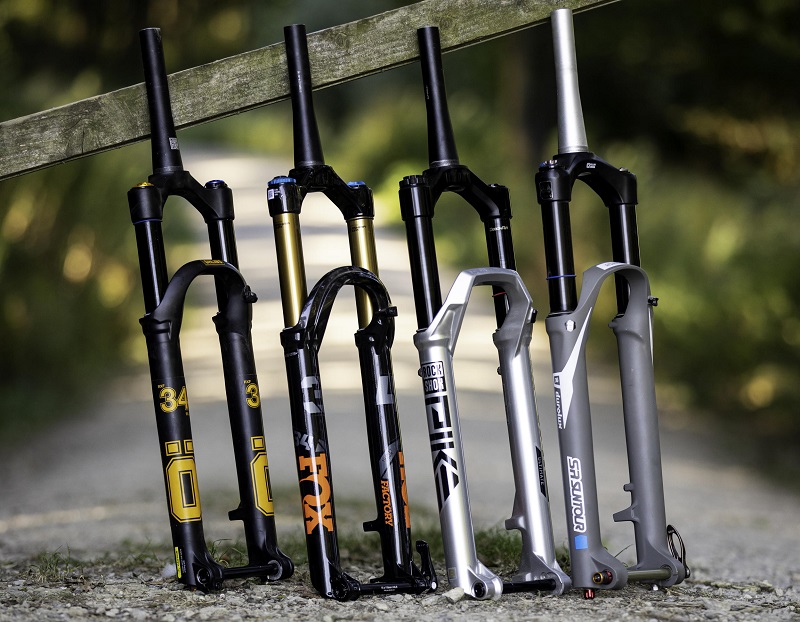
Types of Mountain Bike Forks: An In-Depth Exploration
Mountain bike forks come in various types, each designed for specific riding disciplines and terrain. The type of fork you choose should align with your riding style, preferences, and the type of trails you typically ride. Here are some common types of mountain bike forks:
Rigid Forks
Rigid forks have no suspension and are essentially solid, inflexible forks. They are typically made of materials like aluminum, steel, or carbon fiber. Rigid forks are lightweight and low-maintenance, making them suitable for smooth trails, bikepacking, and urban commuting. However, they offer no suspension, so they’re less comfortable on rough terrain.

Hardtail Forks
Hardtail forks have a front suspension, which means they offer suspension only in the front wheel while the rear wheel remains rigid. They are popular for cross-country (XC) riding, trail riding, and some light downhill riding. Hardtail forks are efficient for climbing and pedaling on smoother terrain.
Air-Sprung Suspension Forks
Air-sprung forks use air chambers to adjust and control the suspension. Riders can fine-tune the fork’s performance by adjusting the air pressure. These forks are lightweight and popular in XC and trail riding due to their adjustability and efficiency.
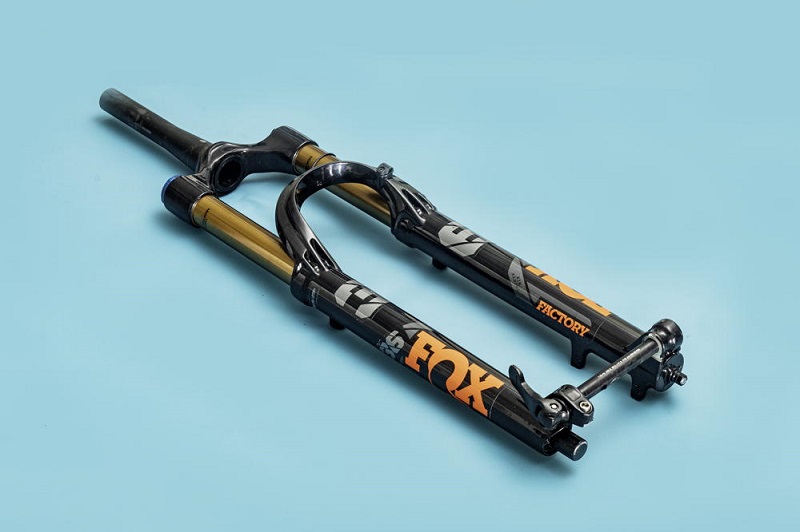
Coil-Sprung Suspension Forks
Coil-sprung forks use a coil spring to provide suspension. They are known for their plush and supple feel but tend to be heavier than air-sprung forks. Coil forks are often used in gravity-oriented disciplines like downhill (DH) and enduro riding where maximum bump absorption is required.
Single-Crown Forks
Single-crown forks are the most common type of suspension fork for mountain bikes. They have one set of stanchions (tubes) and are used for a wide range of riding styles, from XC to enduro. They offer varying levels of travel, which can range from 80mm for XC to 170mm or more for aggressive enduro and downhill riding.
See more: How a mountain bike fork works?
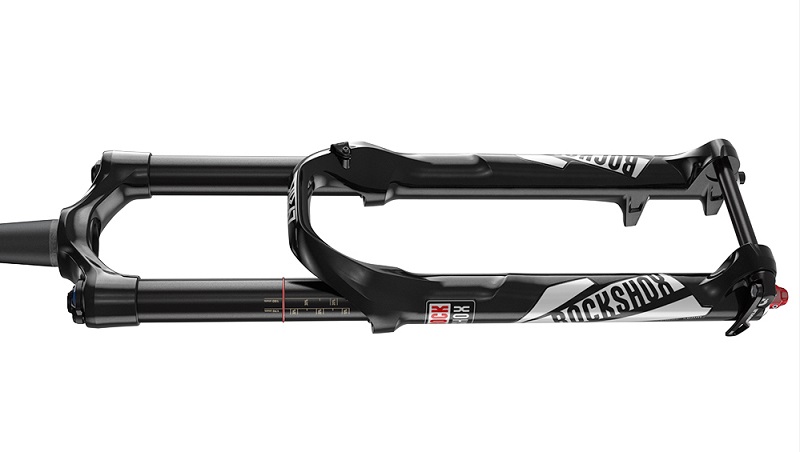
Dual-Crown Forks
Dual-crown forks, also known as downhill forks, have two sets of stanchions and are designed for extreme downhill and freeride riding. They offer a significant amount of travel and are incredibly sturdy to handle the rigors of downhill courses.
Tapered Steerer Tube Forks
Many modern mountain bike forks have tapered steerer tubes, which are larger at the bottom and smaller at the top. This design improves stiffness and steering precision. It’s essential to ensure that your bike’s head tube and headset are compatible with a tapered steerer tube fork.
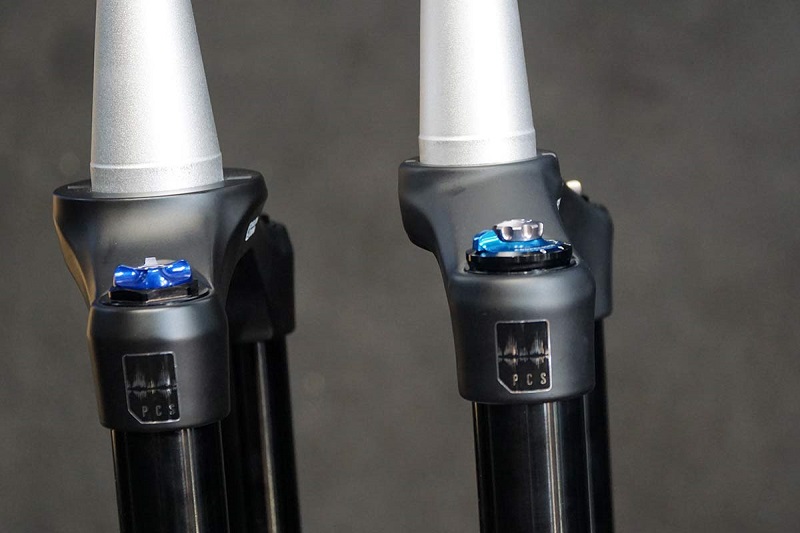
Boost Spacing Forks
Boost spacing is a wider axle standard for both front and rear wheels, and many modern mountain bike forks are designed to accommodate this standard. Boost spacing provides better wheel stiffness and tire clearance, improving overall performance.
Fat Bike Forks
Fat bike forks are designed specifically for bikes with wide, oversized tires, typically 3.8 inches or wider. These forks have extra-wide spacing to accommodate the wide tires and provide additional clearance for mud and snow.
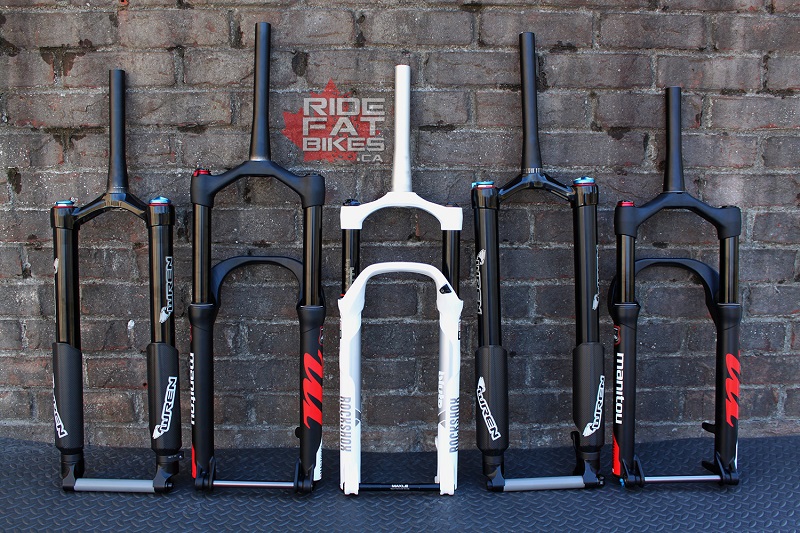
When selecting a mountain bike fork, consider factors such as the type of riding you do, the terrain you encounter, your budget, and any compatibility requirements with your bike frame. Additionally, the choice between air and coil suspension often comes down to personal preference and riding style.
Factors to Consider When Choosing a Mountain Bike Fork
Aside from the type of fork, several factors should influence your decision:
Wheel Size Compatibility
Make sure the fork you choose is compatible with your bike’s wheel size. Common sizes include 26-inch, 27.5-inch, and 29-inch wheels.
Travel
Travel refers to the amount of suspension movement the fork provides. It’s crucial to match the fork’s travel to your intended riding style. Cross-country riders may prefer shorter travel, while downhill riders opt for longer travel forks.
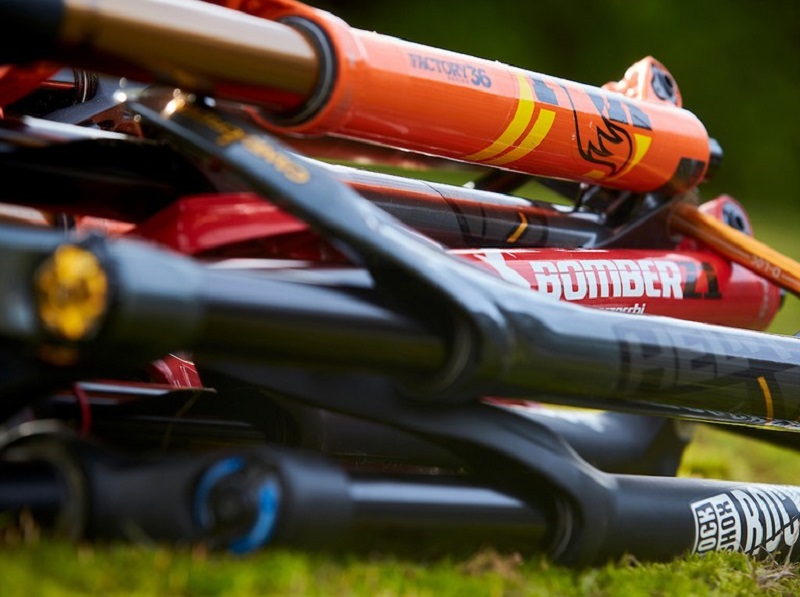
Material
Consider the material of the fork. Carbon fiber forks are lightweight and offer excellent shock absorption, while aluminum forks are known for their durability.
Brake Compatibility
Ensure the fork is compatible with your bike’s braking system, whether it’s disc brakes or rim brakes.
Price Range
Set a budget and explore forks within that range. Remember that while high-end forks offer exceptional performance, there are also budget-friendly options that deliver great value.
Maintenance and Care
Proper maintenance of your mountain bike fork is essential to ensure longevity and optimal performance. Here are some basic maintenance tips:
- Regular Cleaning: Keep the fork clean and free from dirt and debris.
- Check for Leaks: Inspect the fork for any oil or air leaks, which can affect performance.
- Lubrication: Apply lubrication to the fork’s stanchions to keep them functioning smoothly.
- Seal Inspection: Check the seals for any signs of wear or damage and replace them if necessary.
- Professional Servicing: Periodically, take your bike to a professional for a thorough fork servicing.

Conclusion
In conclusion, choosing the right mountain bike fork is a critical decision for any rider, especially beginners. It directly impacts your ride quality, control, and comfort. By understanding the different types of mountain bike forks and considering factors like riding style, compatibility, and budget, you can make an informed choice that elevates your biking experience.
Remember that each type of fork has its own set of advantages and disadvantages, so there’s no one-size-fits-all answer. Your choice should align with your specific riding goals and preferences. So, whether you opt for a rigid fork, hardtail fork, or full-suspension fork, make sure it suits your needs and helps you conquer the trails with confidence.
Now armed with this knowledge, you’re ready to take your mountain biking adventures to the next level. Happy riding!

